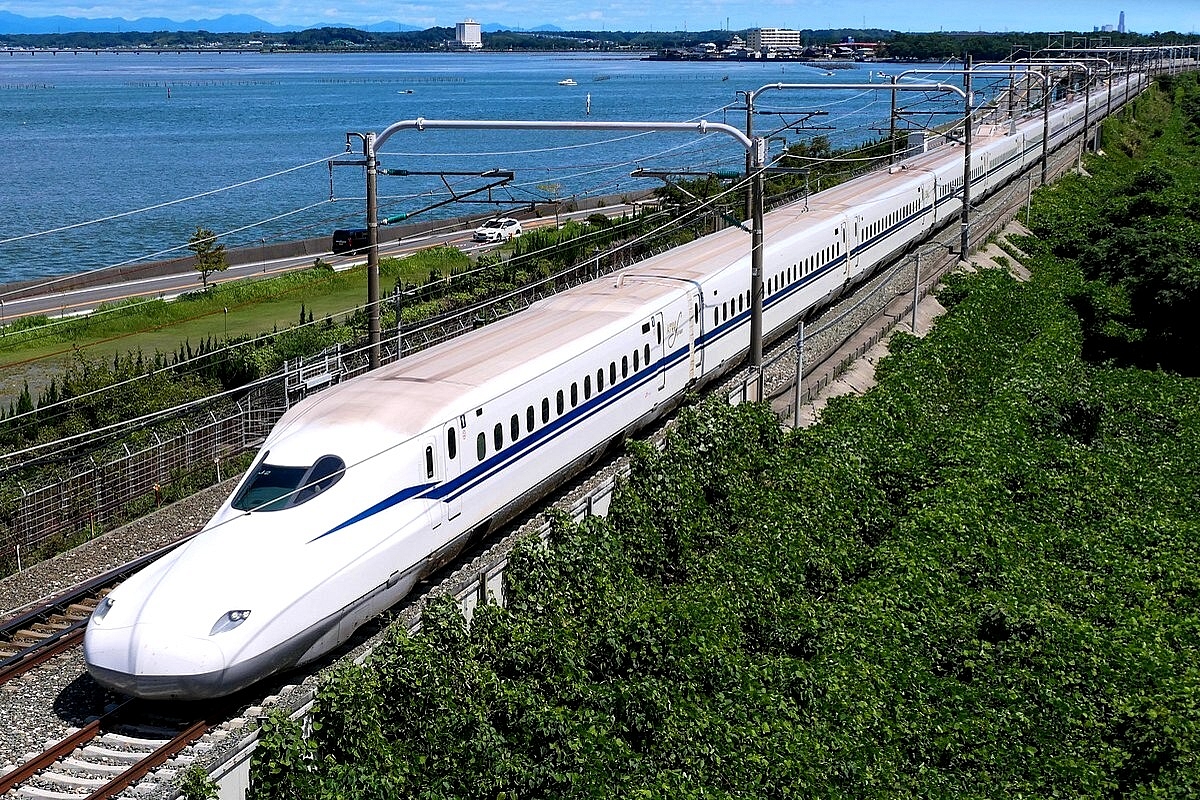Infrastructure
India's First Bullet Train Set for 2026 Launch: Railway Minister

The high-speed rail will cover 508.17 km distance between Mumbai and Ahmedabad. (Wikipedia)
Railway Minister Ashwini Vaishnaw announced on Tuesday (19 March) that the Ahmedabad-Mumbai bullet train is scheduled to be launched in 2026.
"India's inaugural bullet train will be operational by 2026, initially running in a single section from Surat," the minister stated.
The project aims to revolutionise mass transportation by constructing a high-speed rail between Mumbai and Ahmedabad, utilising Japan's Shinkansen technology, also known as the Bullet Train. This initiative will significantly enhance mobility in India and foster regional economic development.
Notably, a loan agreement was inked on 21 December, between the Indian government and the Japan International Cooperation Agency (JICA), securing an official development assistance loan of 400 billion Japanese yen (approximately Rs 22,627 crore) for the Mumbai-Ahmedabad high-speed rail project.
This agreement also involves the collaboration of Japanese Shinkansen experts with the executing agency, the National High-Speed Rail Corporation Limited.
Construction progress has been notable, with work underway on various stations and the commencement of the sea tunnel project, which will facilitate the train's journey from Thane to Mumbai, reports Economic Times. The total project is estimated to cost Rs 1.08 lakh crore.
India’s First Bullet Train Project
The high-speed rail operating at 320 kmph will traverse along west India’s landscape, covering a 508.17 km distance between Mumbai and Ahmedabad in just about two hours.
This will save time compared to current travel time between the two terminal stations by about nine hours (by bus) or six hours (by conventional railways). It will cover 155.76 km in Maharashtra, 4.3 km in the Union Territory of Dadra and Nagar Haveli and 348.04 km in Gujarat, with 12 stations en route.
The project highlights include introduction of a slab track system for the first time in India, construction of 24 river bridges, 28 steel bridges, and seven mountain tunnels along the corridor, and the construction of a 7 km undersea tunnel.
India’s First Undersea Tunnel
The rail route between Mumbai and Thane on the northern side will be a key attraction, with a considerable portion featuring Thane Creek Flamingo Sanctuary (TCFS), which was recognised as a Ramsar Site in August 2022.
The MAHSR corridor will run through a seven-kilometre undersea tunnel in this sector to prevent disturbing the flamingos at the TCFS location and other species in the adjacent rich mangroves.
It will be India's first undersea tunnel and the country's longest rail transport corridor, with a single tube measuring 13.2 metres in diameter.
Widely considered a key project highlight, the 21 km tunnel will be constructed at Thane Creek between underground stations at Bandra-Kurla Complex and Shilphata in Maharashtra, which are around 35 kilometres apart.
This tunnel will be about 25-65 metres deep from the ground level and the deepest construction point will be 114 metres below the Parsik Hill near Shilphata.
Building an underground tunnel, however, has escalated the cost by 100 times. The initial cost of the C2 package which was pegged at Rs 100 crore has now increased to Rs 10,000 crore.
In September 2017, Prime Minister Narendra Modi and his Japanese counterpart Shinzo Abe laid the foundation stone for the high-speed rail project at Sabarmati in Ahmedabad.
Support Swarajya's 50 Ground Reports Project & Sponsor A Story
Every general election Swarajya does a 50 ground reports project.
Aimed only at serious readers and those who appreciate the nuances of political undercurrents, the project provides a sense of India's electoral landscape. As you know, these reports are produced after considerable investment of travel, time and effort on the ground.
This time too we've kicked off the project in style and have covered over 30 constituencies already. If you're someone who appreciates such work and have enjoyed our coverage please consider sponsoring a ground report for just Rs 2999 to Rs 19,999 - it goes a long way in helping us produce more quality reportage.
You can also back this project by becoming a subscriber for as little as Rs 999 - so do click on this links and choose a plan that suits you and back us.
Click below to contribute.
Latest